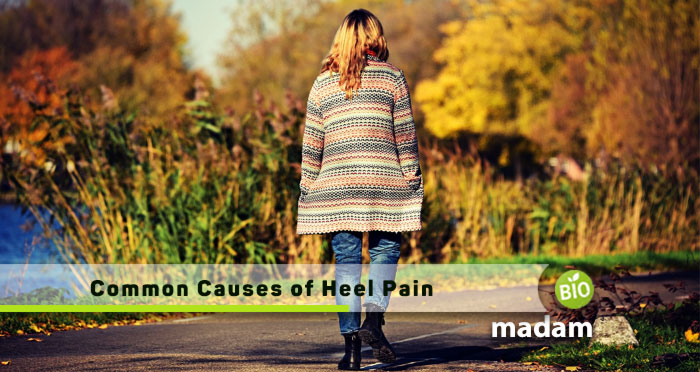Heel pain is a common condition that can affect anyone at any age. It’s often caused by overuse or injury to the heel, but it could also be due to underlying medical conditions such as arthritis or gout. Other causes include wearing improper footwear and having flat feet or high arches. Regardless of the cause, heel pain can make everyday activities difficult and uncomfortable. In this guide, we’ll discuss the most common causes of heel pain so you can better understand your symptoms and get on the path to relief.
Plantar Fasciitis
Plantar fasciitis is the most common cause of heel pain and affects millions of people each year. It occurs when the plantar fascia, a band of tissue that runs along the bottom of your foot, becomes inflamed due to overuse or injury. Symptoms include sharp or stabbing pain in the heel and arch area that is worse in the morning or after periods of rest. In addition, the pain may be worse after long periods of standing or walking. Also, there may be tenderness in the bottom of the foot when pressing on it. For example, when you get out of bed in the morning. That’s why this condition is often referred to as “heel spur syndrome.”

Achilles Tendonitis
Achilles tendonitis is another common cause of heel pain, and it occurs when the Achilles tendon—which connects the calf muscle to the heel bone—becomes inflamed due to overuse or injury. Symptoms include pain along the back of the heel that can worsen with activities such as running or jumping. There may also be tenderness in the area when pressing on it, along with a sensation of tightness in the calf muscle. So, if you have these symptoms and you find yourself asking “Why does my heel hurt?” then Achilles tendonitis may be the cause. So, make sure to get it checked out by a doctor.
Heel Bursitis
Heel bursitis is caused by an inflammation of the bursa, which is a fluid-filled sac located around the heel bone. It can be caused by wearing shoes that are too tight or have too little cushioning, or from repetitive activities such as running or jumping. Symptoms include pain in the back of the heel that may worsen when pressing on it, along with swelling and tenderness in the area of the bursa. So if you’re experiencing these signs and symptoms, then heel bursitis could be causing your pain and discomfort. This also means that it’s important to get it checked out by a doctor. Additionally, you may need an x-ray to rule out any other possible causes of your heel pain.
Stress Fractures
Stress fractures are tiny cracks in the bones of the foot that can occur due to overuse or repetitive activities. This type of injury is common in athletes who participate in high-impact sports such as running and jumping. Symptoms include a sudden sharp pain in the heel that gets worse with activity, swelling, and tenderness when pressing on it. For example, you may need to wear a walking boot for several weeks or you could require surgery. This also means that it’s important to get your heel pain checked out by a doctor so you can get on the path to relief.
Heel Spurs
Heel spurs are bony growths that can form on the heel bone due to overuse or repetitive activities such as running. They usually cause no symptoms but can sometimes lead to pain in the area when they rub against other bones or tissues. In addition, there may be tenderness and swelling around the spur itself. For example, you may need physical therapy to strengthen the muscles in your foot or steroid injections for additional relief from the pain and inflammation. Also, a doctor may recommend orthotics or custom shoes to help reduce the pressure on your heel.
Plantar Fasciitis
Plantar fasciitis is a condition where the plantar fascia—a thick band of tissue that runs along the bottom of your foot from your heel to your toes—becomes inflamed due to overuse or injury. Symptoms include sharp pain in the heel and arch area that is worse in the morning or after periods of rest, as well as tenderness when pressing on it. Also, there may be swelling and a burning sensation in the area. For example, you may need physical therapy to strengthen the muscles in your foot or steroid injections for additional relief from the pain and inflammation. Additionally, wearing supportive shoes with plenty of cushioning can help reduce strain on the plantar fascia and provide extra comfort.
Gout
Gout is a type of arthritis caused by an excess of uric acid in the body that leads to sharp pain, tenderness, redness, and swelling in certain joints, most commonly found in the big toe. It can also occur in other areas such as the heel. Symptoms include sharp pain when pressing on it as well as swelling around the joint. This is why it’s important to get it checked out by a doctor. They can diagnose gout and determine the best course of treatment for you, which may include medications such as nonsteroidal anti-inflammatory drugs (NSAIDs) or corticosteroids. Additionally, lifestyle changes like avoiding alcohol, maintaining a healthy weight, and eating foods that are low in purines can help reduce symptoms of gout.

Heel pain can be caused by a variety of conditions, from heel bursitis and stress fractures to plantar fasciitis and gout. Therefore, it is important to get your heel pain checked out by a doctor in order to receive the correct diagnosis and treatment plan for you. Depending on the cause of your heel pain, treatments may include medications such as NSAIDs or corticosteroids, physical therapy exercises to strengthen muscles in the foot area, wearing supportive shoes with plenty of cushioning, and lifestyle changes like avoiding alcohol and maintaining a healthy weight. With these tips in mind, you should be able to find relief from your heel pain soon!

Hi, they call me Jenna, and I am also known for achieving a gold medal during my Ph.D. in science life. I always had a dream to educate people through my utmost writing hobby. So, I chose this blogging path, and Biomadam gave me this opportunity to present for them. I now stand to entertain you. Continue reading my articles & discuss if you’ve any confusion through the comment section below.

